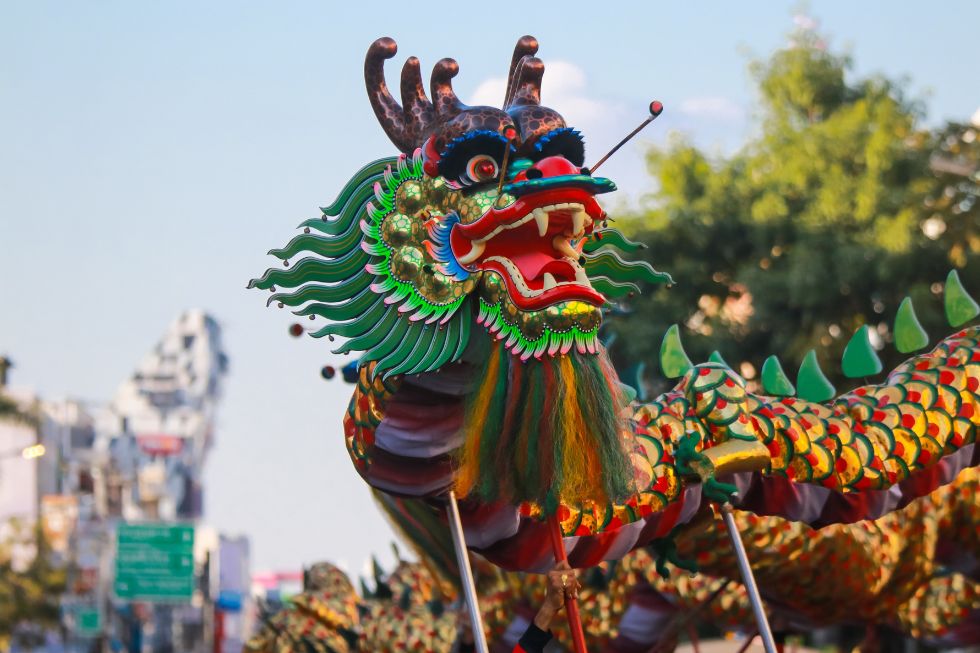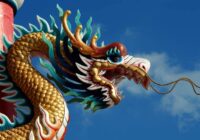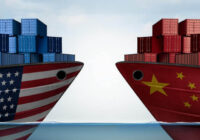I like to help my fellow Westerners understand China by comparing it to our own history. The Western Roman Empire collapsed in 476 AD, leading to the Middle Ages — a time of political fragmentation, constant petty warfare and weak common institutions that slowed progress for centuries. By contrast, even among the world’s oldest civilizations, China stands out for its extraordinary continuity. While empires such as Rome rose and fell, Chinese civilization has maintained a distinct identity since at least 1500 BC — 750 years before the traditional founding of Rome.
Tributary China
Former US Secretary of State Henry Kissinger quoted a French historian who said Chinese civilization originates in such remote antiquity that we cannot identify its beginning. A sophisticated Chinese civilization, however, is traceable to around 1500 BC, making it the oldest continuous civilization in the world. It remains vibrant and future-oriented today.
The Chinese word for China — zhongguo — means “Middle Kingdom” or “Central Kingdom.” The Zhou Dynasty first articulated this concept in the first millennium BC, by which time China had already consolidated administrative power in the Yangtze River Valley.
The “Middle Kingdom” represented the geographical center of the world and the core of power. The Chinese emperor stood as an intermediary between heaven and other civilizations. This worldview, known as tianxia (all under heaven), posited the emperor’s power as boundless.
China divided the world into two categories: civilization and non-civilization. Civilized peoples acknowledged the emperor’s supremacy; uncivilized peoples did not. Vassal states were ranked by their proximity to Chinese power. This Sinocentric order functioned on the principle of superordination and subordination and rested on assumed Chinese superiority.
Journalist Howard W. French described this as an indirect rule over a vast portion of humanity. He explained that Chinese power created a Pax Sinica based on the expectation that other states would accept Chinese superiority in exchange for legitimacy, trade partnerships and what modern international relations call public goods.
Within this tributary system, states sent embassies to perform ritual submission to the Chinese emperor. Rulers of compliant states, some with dynasties centuries old, received formal recognition from the emperor, which legitimized their rule.
At the height of Chinese power in the late 1700s, the UK sent the Macartney Mission to establish trade with the Qing Dynasty. Cultural misunderstandings and protocol missteps led to rejection. Upon departing, Lord George Macartney received a letter from Emperor Qianlong to King George III. It read: “You, O King, from afar have yearned after the blessing of our civilization… I have taken note of your respectful spirit of submission… Thus has my indulgence been manifested.”
From 1600 to the early 1800s, China held between a quarter and a third of global GDP. In 1776, Scottish economist Adam Smith said China was richer than all of Europe combined. Even in 1820, China made up 30% of global GDP.
The century of humiliation
While parts of Europe embraced the Industrial Revolution, China remained bound to traditional economic structures. Europe’s economic and military modernization outpaced China’s, initiating what came to be called the “century of humiliation.” By 1900, China and India together accounted for only 7% of global output.
The downturn began with two opium wars with Britain in 1840–1842 and 1856–1858. British victory forced China to allow opium imports, grant territorial concessions and cede Hong Kong.
Russia exploited Chinese weakness by imposing the 1858 and 1860 treaties, which stripped China of 2.6 million square kilometers along the Amur and Ussuri Rivers. France and Britain occupied Beijing in 1860 and burned the Summer Palace, which had taken 150 years to build.
In 1879, Japan annexed the Ryukyu Islands. A few years later, it defeated China militarily, leading to the loss of Taiwan and Korea. For China, it was especially humiliating that Japan — once a student of Chinese civilization — had modernized and overtaken its former teacher.
China also lost formal control of Vietnam, Burma and strategic ports like Dalian and Lushun through treaties with France, Britain and Russia. In 1900, an alliance of ten Western powers and Japan occupied Beijing. Japan’s 1937–1945 occupation of Chinese territory cost China 20 million lives.
China’s restoration and Trump’s ignorance of history
Since Mao Zedong, China has regained strength, but the country’s rapid development in recent decades is unprecedented. Former Australian Prime Minister Kevin Rudd described it as the English Industrial Revolution and the global information revolution compressed into 30 years.
Chinese leaders and citizens see this not as a rise but as a restoration. They view modern China as resuming its rightful place after a historical disruption. Chinese President Xi Jinping’s “China Dream of National Rejuvenation” reflects this belief.
This restoration carries two sentiments. First, pride in a glorious past. Second, resentment over historical humiliation. These feelings shape both Chinese nationalism and foreign policy. Singapore’s former Prime Minister Lee Kuan Yew once said China is not just another big player but the biggest in world history.
US President Donald Trump ignored this mindset. He believed China would respond to pressure tactics and boasted of countries “kissing my ass” to meet US demands. But China will not respond to bullying. Its pride and sense of grievance prevent it from backing down.
Trump escalated tariffs without an exit strategy. This painted his administration into a corner. If Trump does not reverse course, a recession could follow, despite the US economy’s recent strength.
This trade war could spill over into strategic tensions around Taiwan, the South China Sea and the Philippines. Escalating hostility could lead to a major geopolitical crisis or even military conflict.
The views expressed in this article are the author’s own and do not necessarily reflect Fair Observer’s editorial policy.
Support Fair Observer
We rely on your support for our independence, diversity and quality.
For more than 10 years, Fair Observer has been free, fair and independent. No billionaire owns us, no advertisers control us. We are a reader-supported nonprofit. Unlike many other publications, we keep our content free for readers regardless of where they live or whether they can afford to pay. We have no paywalls and no ads.
In the post-truth era of fake news, echo chambers and filter bubbles, we publish a plurality of perspectives from around the world. Anyone can publish with us, but everyone goes through a rigorous editorial process. So, you get fact-checked, well-reasoned content instead of noise.
We publish 2,500+ voices from 90+ countries. We also conduct education and training programs
on subjects ranging from digital media and journalism to writing and critical thinking. This
doesn’t come cheap. Servers, editors, trainers and web developers cost
money.
Please consider supporting us on a regular basis as a recurring donor or a
sustaining member.
Will you support FO’s journalism?
We rely on your support for our independence, diversity and quality.







Comment